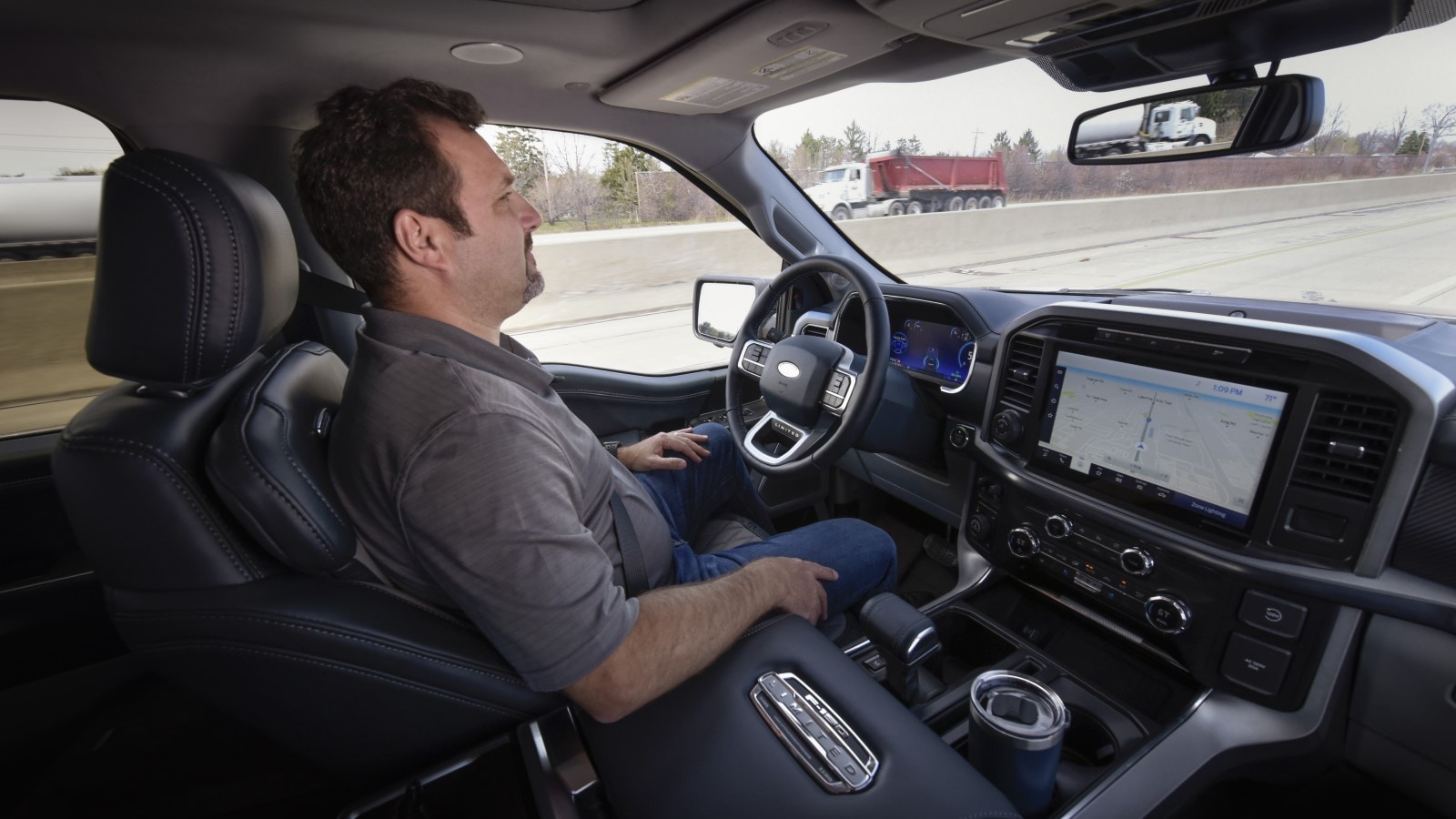Studies tell us that people generally distrust the idea of self-driving cars. However, they behave differently behind the wheel of a car with partial automation they can correct.
That’s the conclusion of a new insurance industry study that could help automakers design better driver aids.
What Are Automated Driver Assists?
There are no self-driving cars for sale to the public in America today, though studies show that some Americans believe there are, thanks to misleading marketing.
Related: Self-Driving Cars – Everything You Need To Know
Many of today’s cars come with automated driver assistance systems. These aren’t true self-driving, but they are a sort of early step to it. They can accelerate, brake, and turn to keep pace with traffic without driver input. But the driver has to keep their eyes on the road and stay ready to take over in a split second if the system encounters something it can’t handle.
GM’s Super Cruise, Ford’s BlueCruise, and Tesla’s Full Self-Driving (Supervised) are well-known examples, but even those are foreign to most.
Mercedes-Benz’s Drive Pilot, sold only in California and Nevada, is the most advanced — the only one that allows a driver to look away from the road.
What Is the Insurance Institute for Highway Safety?
A consortium of insurance companies fund a car safety lab, the Insurance Institute for Highway Safety (IIHS). It conducts crash tests and studies ways to minimize car accidents. Industry insiders often consider it a tougher grader than the federal government.
About the Study
For this study, the IIHS recruited drivers of Ford, GM, Nissan, or Tesla vehicles equipped with partial automation. Researchers chose those four because they operate differently.
The Ford and Nissan systems allow the driver to make minor corrections, such as steering the car to a slightly different position in its lane, without switching off. The IIHS calls this a “cooperative steering” system.
The GM and Tesla systems switch off if drivers correct their driving (though Super Cruise may reactivate after a lag).
Researchers had the drivers watch videos of various traffic situations, from common to scary near accidents. Most respondents believed their system allowed them to make minor corrections even if, in reality, it didn’t.
In every scenario, drivers with cooperative driving systems were more likely to make adjustments that made them comfortable. Drivers without were more reluctant to intervene – a practice that might not be safe.
“Those whose vehicles really do allow shared control are 40%- 48% less likely than the others to say they would keep their hands off the wheel in situations that would make most drivers nervous,” the researchers write.
“These findings suggest that cooperative steering may have an implicit influence on how willing drivers are to take action when the situation calls for it, regardless of how they think their system is” designed,” says Alexandra Mueller, a senior IIHS research scientist and the study’s lead author.
The results left the insurance researchers with a distinct preference for cooperative steering. “These results suggest that small differences in system design can nudge drivers toward safer habits,” explains IIHS President David Harkey.








